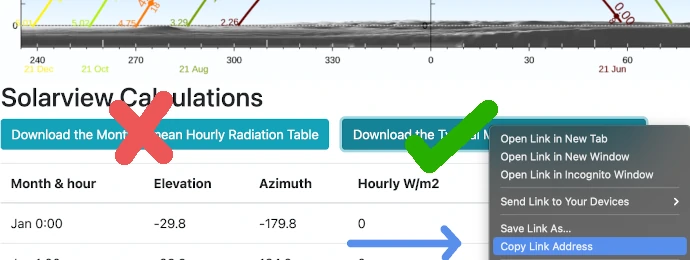SOLAR CALCULATOR
The NIWA Solar View tool is an excellent resource for gathering solar data for a specific location. However, converting that data into an accurate prediction of a typical year's performance for an Off-Grid or Grid-Tied Hybrid system can be challenging. Our Solar Calculator simplifies this process by allowing you to input a link to your NIWA data and experiment with different configurations of panels and batteries based on your daily and monthly energy needs. This will give you a clear understanding of the potential of your solar system and help you make informed decisions about your energy needs.
Step 1.
- Open a new tab or window and visit the NIWA Solar View website.
- Select the planned panel tilt and panel bearing, and generate your SolarView.
- Once the SolarView is generated, right-click on the 'Download the Typical Meteorological Year Table' button and copy the link.
- Paste the link into the designated field below.

Step 2.
Step 3.
*Our Solar Calculator's calculations are based on utilizing up to 80% of the Lithium Iron Phosphate (LiFePO4) battery capacity. The round-trip losses for charging and discharging the battery are estimated at 5%. The night rate is calculated between 11pm and 7am. If a generator is selected, it is assumed that it will charge the battery while also powering the home. The battery's charge level is checked every hour and if it is above 30%, the generator is turned off, and the home is powered by solar and battery. The number of kWhs added to the battery during this time is allocated to the solar/battery result rather than the 'from generator' result. There is no cap on the number of kilowatts that can be exported at any given time, but inverters and power companies may have limitations. Keep in mind that these numbers are estimates and do not take into account variables such as shading, panel strings facing different directions, cable losses, and inverter losses.